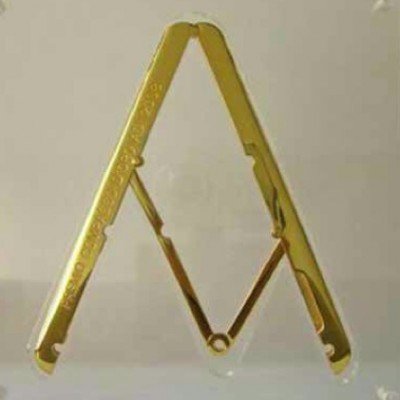Compasso D’Oro Celebrates Italian Design Excellence
Considered the Oscar of Italian design, as well as an authoritative barometer of the state of the cultural debate on industrial design itself, the Compasso d’Oro award is the major acknowledgement of Italian design and enjoys a high reputation throughout the world, so much so that London’s prestigious Phaidon Press has selected it among the top 999 design classics of all time.
On the occasion of the Year of Italian Culture in the United States, the design icons awarded with the Compasso d’Oro have been at the center of a series of exhibitions organized in New York and Chicago by the Italian Industrial Design Association (ADI). Originally born from a Gio Ponti idea, the award was set up in 1954 by the La Rinascente department store in Milan, as a way of promoting industrial design in Italy after the end of World War II. To represent this new awareness of Italian design, Albe Steiner, graphic designer and consultant for La Rinascente, chose the compass, invented by Adalbert Goeringer in 1893 to measure the golden section, as a symbol for the award. The logo of the prize was therefore established, quickly followed by a three-dimensional version realized by the architects Alberto Rosselli and Marco Zanuso. What in this traditional iconography was an emblem of harmony and perfect proportion has today become a design classic in itself: an icon that represents technical, functional and aesthetic quality and innovation.
Initially organized by La Rinascente on an annual basis, from 1958–67 the award was managed jointly with ADI, the Italian Association for Industrial Design. Since 1964 the award has been entrusted exclusively to ADI. The prize is currently assigned every three years by an international jury, who make a secondary selection following the initial list of candidates made by the Permanent Design Observatory, a committee of journalists, critics, and specialists, established in 1998. Since 1954 nearly 2000 products have been given awards or honorable mentions and the range of products taken into consideration has been widely extended: not only consumer goods like furniture and household items, but also work tools and graphic and Web design. This shift is marked by the change in the name of the prize itself, which now rewards ‘industrial design’, rather than just ‘product aesthetics’. Thanks to the exhibitions promoted by ADI around the world, the prize has acquired an international reputation for excellence, and its logo is now more than ever an icon of the strong international affirmation and recognition of Italian design.
Laura Giacalone is the Associate Editor for the Italian Journal.
